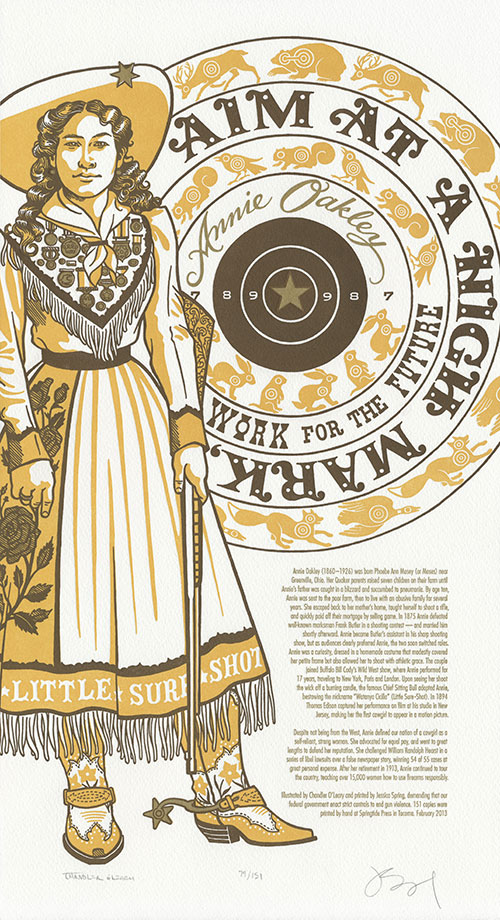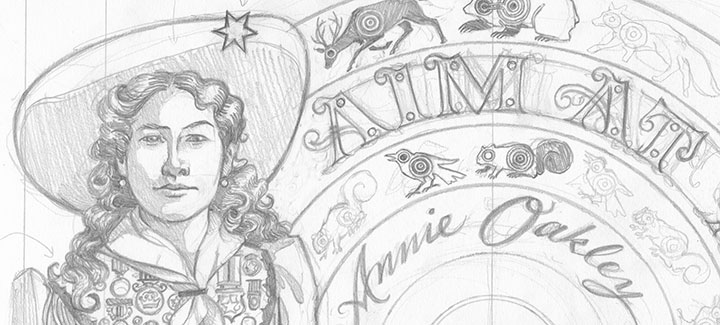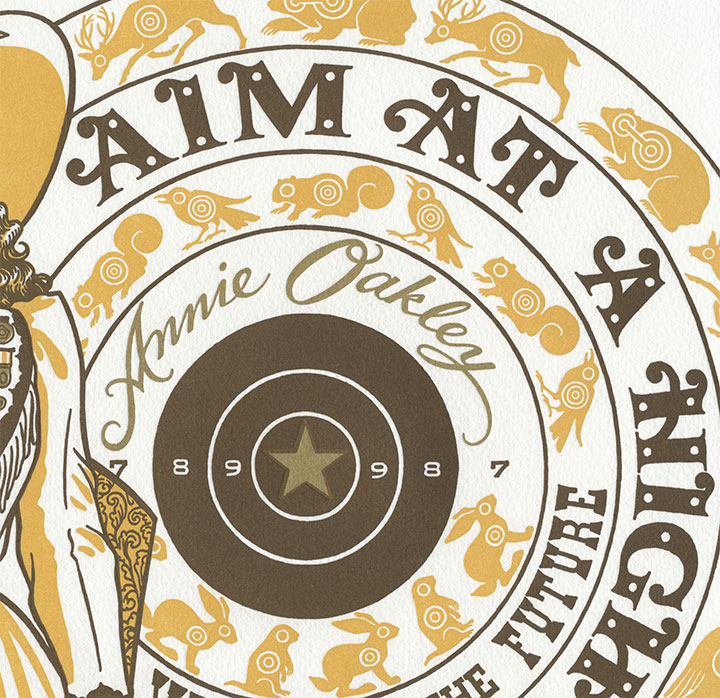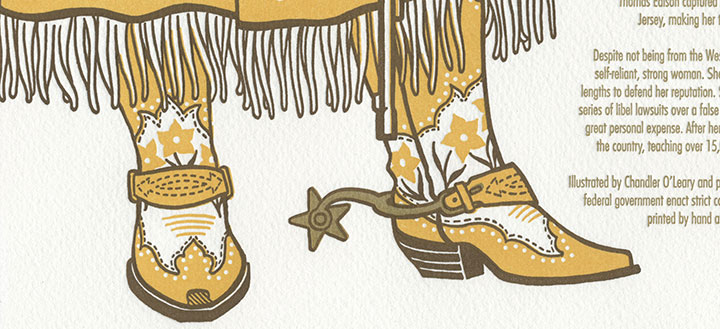This has not been an easy post to write—and yet in a way it’s been writing itself over and over again, for years now. To be honest, Jessica and I designed this broadside months ago, and planned to release it shortly after last year’s theater shooting in Aurora, CO. Other projects got in the way, and then the 2012 election persuaded us to table the piece for the time being.
We should have known: until there’s serious change in our society, this subject will always be hatefully relevant.
So here we are again, on the heels of yet another rash of terrible violence. But this time feels different—not only because of the sheer horror of the Newtown tragedy, but because at last, our country is having the conversation it needs to have.
At the center of the debate is the precarious balance of right and responsibility—and here’s where I need to keep from shooting my mouth off. I’ve written and deleted a hundred sentences about Jessica’s and my personal thoughts on the subject—but I have a feeling you can already guess what they are. And we also recognize that our beliefs represent just one side of our divided culture. So the thought of pontificating just wearies and saddens us; we’d much rather focus on how we might move forward, together.
For us, that meant starting with an attempt to comprehend the other side of the debate. So in hoping to understand the love of guns many in our country share, we looked to legendary sharpshooter Annie Oakley, whose words pierce the heart of the matter:
Aim at a high mark, work for the future.
This piece is a stark, steely contrast to the bright colors and detailed embellishments of the rest of the series. Annie stands her ground beside a blazing metallic bullseye, representing the golden target of sanity amid the scatter-shot opinions and half-cocked sniping of those on the extremist fringes. And let me tell you: there’s real gold in that ink. Jessica mixes her own formula—maybe it’ll shine all the brighter, and help steady our collective aim.
• • • • • • • • • • • • • • • • • • • • • • • • • • • • • • • • • • • • • • • • • • • • • • • • • • • • • • • •
Gun Shy: No. 17 in the Dead Feminists series
Edition size: 151
Poster size: 10 x 18 inches
Printed on an antique Vandercook Universal One press, on archival, 100% rag (cotton) paper. Each piece is numbered and signed by both artists.
The edition number we choose for each print in our series is always significant in some way—whether we call attention to it or not. In the case of Gun Shy, we’ve created an edition of 151 prints to represent each person injured or killed in a shooting rampage in 2012. In light of that sobering number, we’ve chosen to donate a portion of our proceeds to Demand A Plan. A campaign of Mayors Against Illegal Guns, Demand a Plan is a national, bipartisan coalition working to make America’s communities safer by keeping illegal guns out of dangerous hands.
Colophon reads:
Annie Oakley (1860 – 1926) was born Phoebe Ann Mosey (or Moses) near Greenville, Ohio. Her Quaker parents raised seven children on their farm until Annie’s father was caught in a blizzard and succumbed to pneumonia. By age ten, Annie was sent to the poor farm, then to live with an abusive family for several years. She escaped back to her mother’s home, taught herself to shoot a rifle, and quickly paid off their mortgage by selling game. In 1875 Annie defeated well-known marksman Frank Butler in a shooting contest — and married him shortly afterward. Annie became Butler’s assistant in his sharp shooting show, but as audiences clearly preferred Annie, the two soon switched roles. Annie was a curiosity, dressed in a homemade costume that modestly covered her petite frame but also allowed her to shoot with athletic grace. The couple joined Buffalo Bill Cody’s Wild West show, where Annie performed for 17 years, traveling to New York, Paris and London. Upon seeing her shoot the wick off a burning candle, the famous Chief Sitting Bull adopted Annie, bestowing the nickname “Watanya Cicilla” (Little Sure-Shot). In 1894 Thomas Edison captured her performance on film at his studio in New Jersey, making her the first cowgirl to appear in a motion picture.
Despite not being from the West, Annie defined our notion of a cowgirl as a self-reliant, strong woman. She advocated for equal pay, and went to great lengths to defend her reputation. She challenged William Randolph Hearst in a series of libel lawsuits over a false newspaper story, winning 54 of 55 cases at great personal expense. After her retirement in 1913, Annie continued to tour the country, teaching over 15,000 women how to use firearms responsibly.
Illustrated by Chandler O’Leary and printed by Jessica Spring, demanding that our federal government enact strict controls to end gun violence.
UPDATE: poster is sold out. Reproduction postcards available in the shop!



